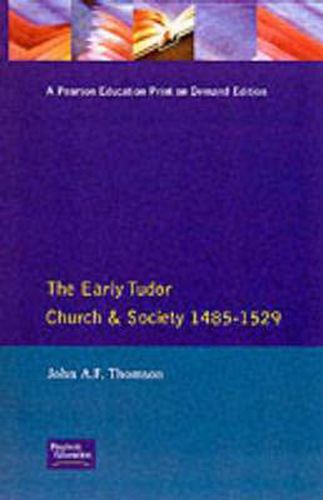Readings Newsletter
Become a Readings Member to make your shopping experience even easier.
Sign in or sign up for free!
You’re not far away from qualifying for FREE standard shipping within Australia
You’ve qualified for FREE standard shipping within Australia
The cart is loading…






This is a major study of the final phase of the medieval church in the decades up to the Reformation itself, in the reigns of Henry VII and Henry VIII. Usually neglected, this was in practice nearly a half-century of active and purposeful life for an institution that was, as Thomson shows, far from decayed or corrupt as is often assumed. The book surveys all aspects of the Church’s structure and role across the half-century and considers the activities and attitudes of churchmen themselves and their relatives with the laity. In doing so it tells us not only about the Church itself but also a great deal about early Tudor society. Fills a major gap. The church is usually considered from the later perspectives of the Reformation itself. But this book offers a study of the subject in its own right away from the distortions of ‘hindsight history’. Numerous lay and ecclesiastical records provide a detailed picture of the church’s social role and one of the incidental pleasures of the book is the rich vignettes of daily life in early Tudor England. Since the upper echelons of the Church hierarchy were in many respects senior civil servants, and the Church itself was deeply involved in the politics of the age, the book throws light on the contemporary political scene as well - the potential readership amongst social and political historians outnumbers the more specialist market of ecclesiastical history specialists.
$9.00 standard shipping within Australia
FREE standard shipping within Australia for orders over $100.00
Express & International shipping calculated at checkout
This is a major study of the final phase of the medieval church in the decades up to the Reformation itself, in the reigns of Henry VII and Henry VIII. Usually neglected, this was in practice nearly a half-century of active and purposeful life for an institution that was, as Thomson shows, far from decayed or corrupt as is often assumed. The book surveys all aspects of the Church’s structure and role across the half-century and considers the activities and attitudes of churchmen themselves and their relatives with the laity. In doing so it tells us not only about the Church itself but also a great deal about early Tudor society. Fills a major gap. The church is usually considered from the later perspectives of the Reformation itself. But this book offers a study of the subject in its own right away from the distortions of ‘hindsight history’. Numerous lay and ecclesiastical records provide a detailed picture of the church’s social role and one of the incidental pleasures of the book is the rich vignettes of daily life in early Tudor England. Since the upper echelons of the Church hierarchy were in many respects senior civil servants, and the Church itself was deeply involved in the politics of the age, the book throws light on the contemporary political scene as well - the potential readership amongst social and political historians outnumbers the more specialist market of ecclesiastical history specialists.